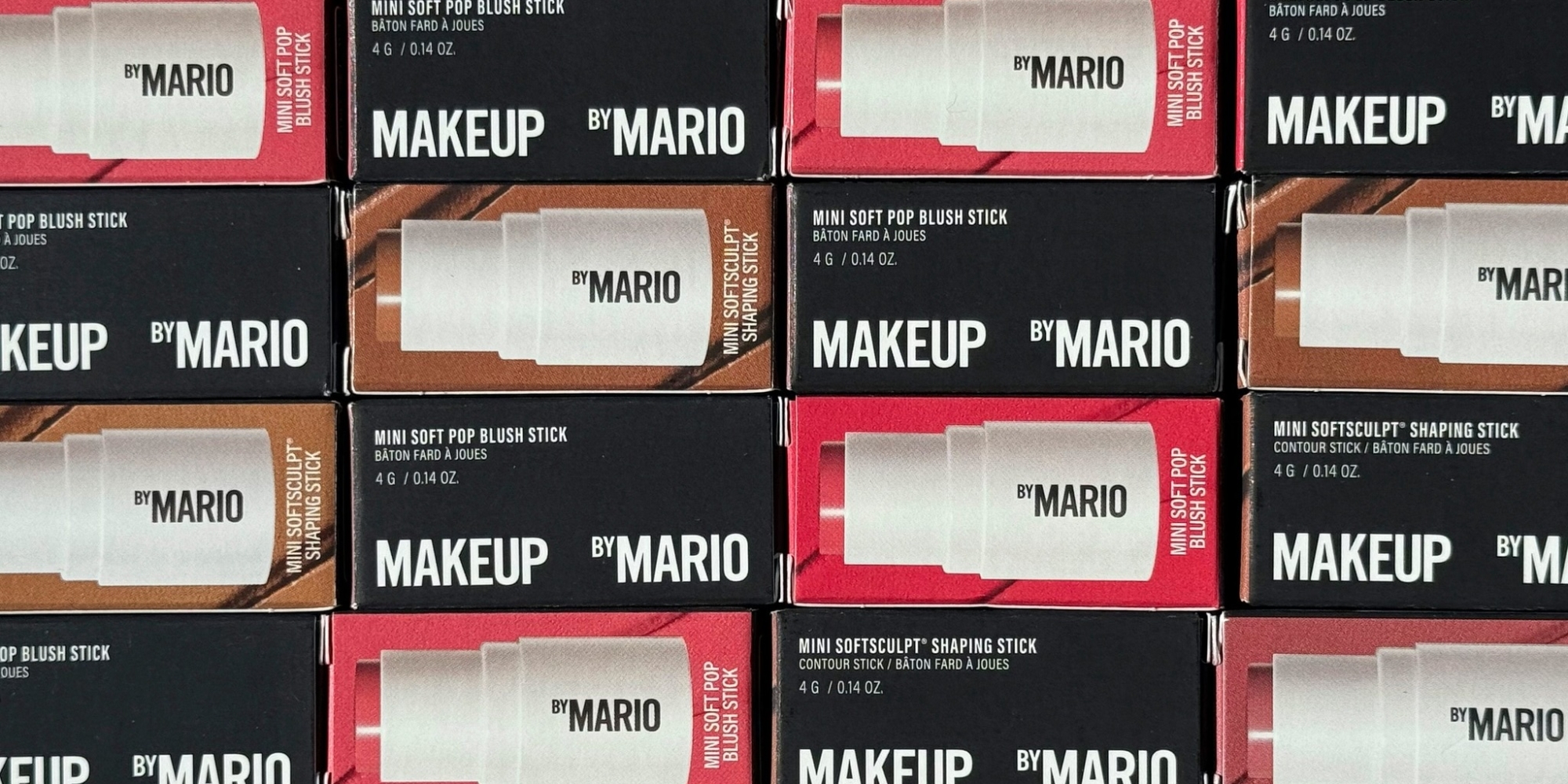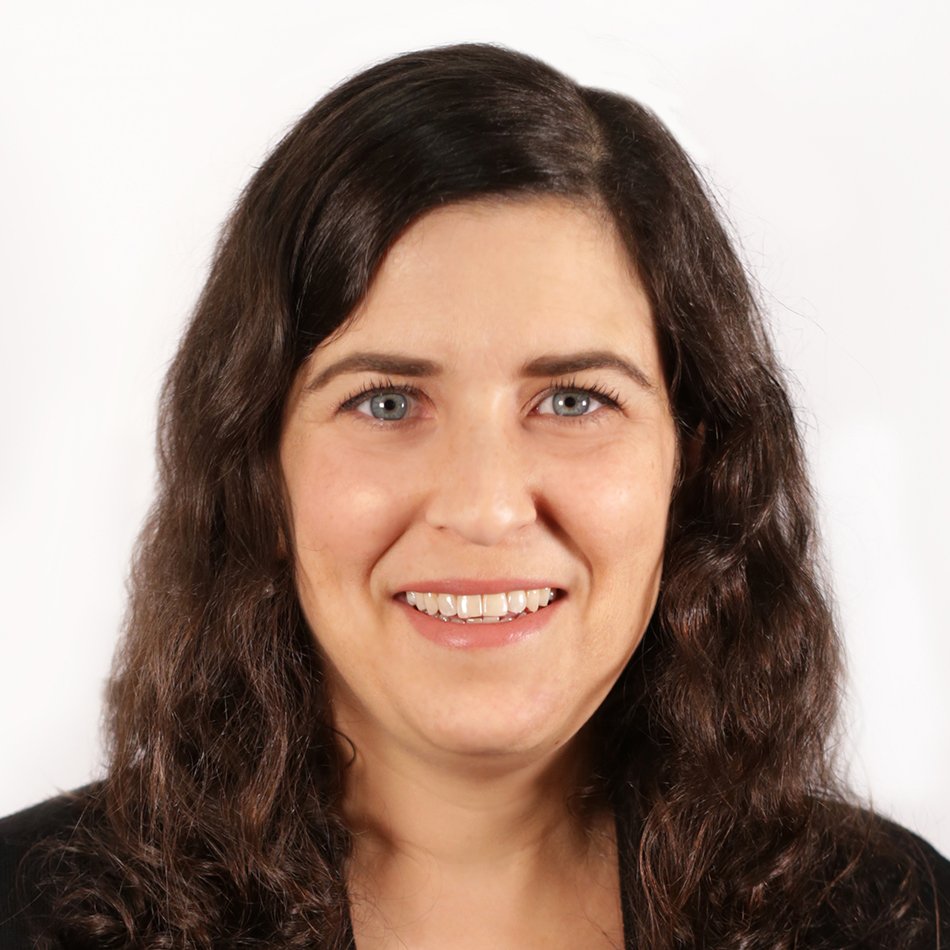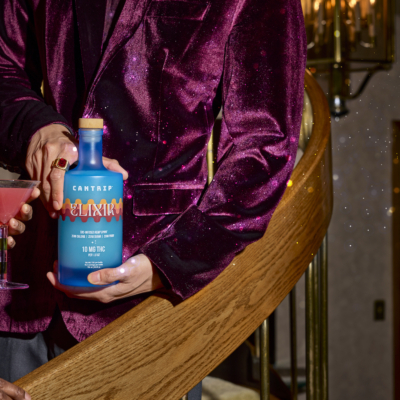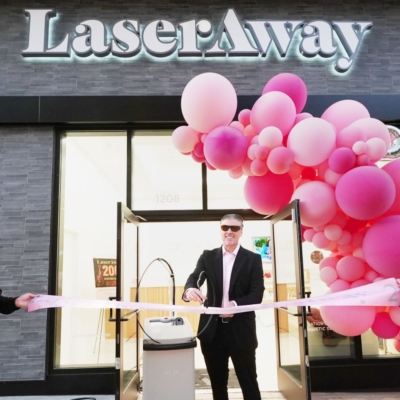
The Funding Conundrum: Can You Build A $100M Beauty Brand With Less Than $15M?
In a recent report on how to build a $100 million brand, the venture capital firm XRC Ventures estimates it takes $15 million to $25 million in funding for a brand to reach the sales threshold where large strategics will consider its scale sufficient for an acquisition.
This level of funding allows brands to dedicate 30% to 50% of sales to marketing until hitting $30 million to $50 million in sales and runway before meaningful profitability at $10 million to $50 million in sales. It also pays for inventory, team and operations and supports working capital.
According to the report, every $100 million brand XRC Ventures has come across shares three attributes: “adequate capital, a product that solves a real problem and connects at an emotional level,” and “a founder who can translate intuition into disciplined action, fast.”
But is this capital-intensive approach the only path forward? In a funding ecosystem with limited resources to spread around, Beauty Independent wanted to explore whether XRC Ventures’ estimate holds true—and what alternative attributes or strategies could propel brands to $100 million without large sums of institutional capital.
So, for the latest edition of our No Stupid Questions series, we asked 10 beauty investors and entrepreneurs the following: Do you agree that it takes $15 million to $25 million in funding to build a $100 million beauty brand? If not, what do you think is the realistic capital requirement, and what are key factors that could increase or decrease that number? What attributes or strategies do you believe are critical for brands aiming to reach $100 million in sales with less funding than XRC Ventures suggests?
- Qasim Mohammad Partner, Wittington Ventures
The notion that building a $100 million brand requires $15 million to $25 million in funding is increasingly challenged by data from Wittington Ventures and recent market outcomes. In practice, the capital needed is often up to $15 million, and in many cases, significantly less. The real determinant is not just the amount raised, but how intelligently it’s deployed.
Brands that reach nine-figure exits with lean funding share a set of common traits. They build early traction around a single hero product, leveraging organic growth through social media and influencer engagement rather than relying on expensive paid marketing. Their approach to operations is equally disciplined: micro-batching product development, minimizing inventory risk, and maintaining agility in fulfilment.
These brands prioritize retention and loyalty, cultivating high lifetime value through direct-to-consumer channels, subscriptions and referral programs. Fundraising is staged and strategic, with larger rounds reserved for proven inflection points rather than premature scaling.
Overcapitalization, on the other hand, can dilute returns and lead to less favorable exit multiples. Data shows that brands raising outsized rounds at peak growth often struggle to maintain efficiency and discipline, ultimately underperforming at exit. The lesson is clear: Capital should be a catalyst, not a crutch.
It’s also essential to recognize that funding requirements are not uniform across categories. Beauty brands, for example, benefit from high margins and repeat purchase behavior, enabling them to scale with less capital than beverage brands, which contend with heavier inventory, logistics and lower gross margins. The most capital-efficient brands are those that understand their category dynamics and tailor their growth strategies accordingly.
Ultimately, the journey to $100 million in sales is less about the quantum of capital and more about the precision of its deployment. Brands that combine disciplined execution, emotional resonance and capital efficiency consistently outperform their overfunded peers.
The smartest founders treat every dollar as a strategic lever, focusing on sustainable growth and market relevance rather than chasing funding milestones. In today’s market, agility and focus are worth more than sheer financial firepower.
- Michal Berski Co-Founder, Curlsmith
When I launched Curlsmith, my startup capital was about $50,000, followed by a handful of small checks over the next couple of years, totaling no more than $500,000. Four years later, we sold the brand for $150 million.
What got us there wasn’t a war chest, it was discipline, quality and endurance. We focused on exceptional formulations, a lean team and smart cost structure. Every dollar worked overtime. I’d had 15 years of experience in beauty and personal care, which helped me skip a lot of the rookie mistakes that eat startups alive.
Yes, today’s market is noisier and the cost of cutting through that noise has gone up, but the idea that it takes $15 million to $25 million to build a $100 million brand is more myth than math. Money helps you scale a good business; it doesn’t make a great one. Founders conflate runway with resilience. Capital can buy you time, but not taste, grit, or judgment.
Most brands don’t fail because they run out of money. They fail because the founder runs out of energy or conviction. Founders give up before the business does. Staying lean forces creativity. It keeps you focused on what actually matters: a real problem, a real connection with consumers and relentless execution. Passion and clarity of vision are worth a lot more than another term sheet.
- Mary Claire Bass VP, Provenance
In our experience, it typically takes $20 million of primary capital to build a $100 million brand. Across our last three investments in the beauty and wellness categories, we’ve seen an average of roughly $5 million in early investment to reach $50 million in revenue, followed by roughly $15 million in later capital to pursue an omnichannel strategy and scale to $100 million and beyond.
Perhaps the more interesting pattern is how the funding stages themselves are evolving. Instead of progressing through the traditional friends-and-family, seed, series A and series B sequence, we are seeing those collapse into two phases: an “early” round and a “late” round. This isn't the only way to do it, but this pattern seems to be emerging for rapidly scaling and efficiently operated brands
- Jaime Schmidt Founder and Co-Founder, Schmidt's Naturals and Color Capital
Schmidt’s Naturals is proof that a brand can reach strategics without outside funding. We’d grown to nearly $25 million in revenue after a patient and intentional seven-year build when we caught the attention of Unilever and other potential acquirers. What truly drew them in wasn’t just the revenue numbers, but our creative marketing, effective omnichannel approach, authentic founder story and the loyal community that formed around the brand. That combination ultimately led to a nine-figure acquisition.
Of course, funding can accelerate growth, especially in today’s increasingly crowded categories. But when a brand has “a product that solves a real problem and connects at an emotional level, and a founder who can translate intuition into disciplined action,” as XRC Ventures describes, a thoughtful, bootstrapped approach can absolutely carry you to the finish line without institutional capital.
- Nicole Fourgoux Operating Partner, Stride Consumer Partners
I think the $15 million to $25 million estimate feels directionally right, but it’s not a rule. The amount of capital required to reach $100 million in sales varies widely depending on the environment, the category and the growth architecture a founder chooses.
What can increase or decrease the capital required:
The biggest swing factor is how efficiently a brand can reach and convert consumers. When new channels open up like early DTC or, more recently, social selling, brands can scale with less capital because customer acquisition is temporarily more efficient. Once those channels mature and everyone uses the same playbook, the cost to break through rises again.
Category dynamics also matter. High-loyalty, education-heavy categories like skincare often take longer to build velocity than makeup, which tends to reach its inflection point earlier. Macro conditions such as supply-chain costs, retailer margins and merchandising requirements also shape how far each dollar goes.
But, in my view, the two biggest drivers are distribution strategy and marketing model. A brand’s mix of DTC and retail dictates its working-capital needs, and its ability to spark organic demand before paying heavily for upper-funnel awareness determines how efficiently it can scale.
Attributes and strategies that help brands reach $100 million with less capital:
The most efficient brands focus relentlessly. They do fewer things better, finding their superpower and leaning into it before layering on additional initiatives. It’s resource intensive to try too many things at once, and scattered execution burns both time and capital.
They also find ways to gather consumer insights and build community before buying awareness. Founders who test small, listen closely and prove product-market fit early can stretch dollars much further than those chasing scale before validation. Delaying institutional funding for as long as possible often forces that useful scrappiness. It keeps teams sharp, resourceful, and honest about what’s working.
At the same time, under-funding for too long can mean missing key inflection points. The goal is balance: enough capital to seize opportunity, but not so much that it dulls focus. And, increasingly, it’s not just about how much you raise, but who you raise it from. More founders are looking for investors who can bring "added value" through operating experience and pattern recognition across investments. This can shorten the "test and learn" periods for brands and build efficiencies faster.
So, yes, $15 million to $25 million may be a fair average, but the real differentiators are timing of the fundraise, marketing and channel strategy, and execution discipline. The best founders don’t spend their way to $100 million, they build the right model first, then fuel it with precision.
- Brian SugarCo-Founder and Managing Partner, Sugar Capital
It doesn’t take $15 million to $25 million to build a $100 million beauty brand. That number comes from an era when founders were told to blitzscale, spend half of revenue on marketing, and pray that profitability would eventually appear. That playbook worked when capital and attention were cheap. It doesn’t anymore.
The best brands now are proving that focus and discipline can do what funding used to. Hero Cosmetics started with less than $50,000 and hit $100 million in sales before selling for $630 million. Native did it with $500,000. Bloom Nutrition built a nine-figure business before taking its first big check. And Grüns is doing it now, turning a greens gummy into a breakout brand by mastering its product, distribution and community before layering on spend.
The truth is that most brands don’t fail because they’re undercapitalized. They fail because they spend money in the wrong sequence. One great product, one strong channel, one working message, that’s where scale starts. Hero owned Amazon before retail. E.l.f. owned Target before Ulta. Grüns leaned into social virality before national rollout. When distribution clicks, capital requirements shrink.
The brands that make it on less money think like operators, not influencers. They treat cash as oxygen, not decoration. They don’t hire early. They don’t buy ads they can’t measure. They let each phase fund the next. Growth becomes earned, not rented.
Distribution is leverage now. Retail shelves, marketplaces and social algorithms can do the heavy lifting if the product is right and the brand story travels fast. The goal isn’t to be everywhere at once, it’s to be in the right places long enough to matter.
It doesn’t take $25 million to reach $100 million. It takes sequencing, restraint and a product people keep buying without being told to.
-
The one thing I couldn't get out of my mind while reading this report was these companies were all likely participating in very crowded categories, competing on small points of differentiation on brand or product features. If this is the case, then, yes, customer acquisition costs will be very expensive and national retail rollouts need to be front-loaded with capital, all so that you can stand out in a busy space.
But if you have a truly innovative product that solves a customer need that no one else does, then you can scale far more efficiently, especially online, as you don't have competitors driving up the cost of acquisition.
- Mike Duda Managing Partner, Bullish
While XRC’s methodology to get to this assertion is very thoughtful, I do not agree that one has to raise $15 million to $25 million to build a $100 million brand. This reflects running a traditional playbook that assumes brute-force scaling through paid marketing and focuses on supply-side operating versus demand-led growth.
Founders who start with a deep understanding of the problem they’re solving and who craves their solution can win. When you have that, and a brand that hits an emotional nerve, you don’t have to buy growth, you'll earn it.
For me, the keys to building a business that’s more dependent on consumer conviction than venture capital include:
- Being a viable business. If you have strong gross margins, repeat purchases and growing AOV/LTV metrics, you will be able to control your destiny sooner versus later.
- Earn, not acquire. The Silicon Valley view of marketing worships digital acquisition/CAC. Brands that hone in on their core audience (we call them Pioneers) win them over and do things that drive word of mouth, resulting in a stronger base. Spending less money on marketing may not drive the immediate “up and to the right” arrow, but we believe it will put you in position to have a stronger foundation earlier versus manufacturing one later.
- Build systems that scale insight, not just spend. Too often, capital is used to cover up weak signals or force a product-market fit that doesn’t exist yet. Instead, use early DTC efforts as an insight engine. Let organic feedback sharpen the offering. Brands like Bubble Beauty did this masterfully: they focused on a Gen Z audience, built community, engaged authentically, and proved demand before pouring fuel on the fire. Those actions earned them wholesale interest, inventory financing, and growth without overcapitalization.
To be clear, capital is needed to grow companies. But capital raises should factor in founder ambition, not just meet VC expectations. There’s no one right way. With the rise of alternative financing, more AI-augmented operations and a brand strategy executed at all touchpoints, I expect $100 million businesses will increasingly be built without massive funding rounds.
- Bill Sweedler Founder, CEO and Chair, Windsong Global
At Windsong, we focus on identifying brands that have critical resonance with specific segments of consumers, a unique product proposition and are advantaged by macro tailwinds. Funding needs vary significantly based on these variables.
Powerful brands are built by having a great product married to a meaningful purpose that earns community interest and loyalty. These remarkable products underpin the brand, which creates permission to expand, grow and thrive. Often beauty brands see excess capital as the means to grow via marketing spend, which leads to unnatural and unsustainable growth. We believe that outsized advertising expenditure is a tax that average brands need to pay.
Many brands never have the "permission" to grow significantly above $100 million due to constraints to their addressable audience, margin or frequency of purchase. Does that mean the founder or business failed?
Windsong does not agree that success is defined by revenue milestones or a defined velocity. These are terms that investors use, not founders. However, as Windsong is an investor, we must find ways to help translate investor goals into operational milestones for management that facilitate capital efficiency as a competitive advantage.
While Windsong recognizes that many investment firms follow the typical "capital architecture" model that XRC identifies in the Brand Capital Report, we don't agree that $15 million to $25 million is a universal requirement. We've observed brands reaching $100 million with significantly less capital when they possess critical elements, including high gross margins, strong repeat purchase rates, professional/practitioner distribution channels, proprietary formulations and organic community building.
The $15 million to $25 million figure reflects a specific playbook—aggressive omnichannel expansion funded by paid acquisition—which is not the only path forward. Factors that increase capital needs include commoditized positioning, low margins, retail-first strategies and artificial growth through excess digital spend.
In the new media landscape advantaged by leveraging existing large communities, compelling founders who connect at scale, integrated media to sale and substantial audience impact of TikTok and YouTube, we are seeing alternate paths that require less capital, but more unique strategy.
The $15 million to $25 million requirement assumes growth must be bought. But brands that earn their growth through product excellence, authentic community building and founder discipline around profitability can reach $100 million on less capital and consequently create significantly more value for both founders, management and investors.
At Windsong, we do not pre-define the type of investment we make. Rather, we focus on compelling brands, distinct products and talent from which we determine the capital efficiency needed to achieve our investment goals. Capital efficiency isn't just a constraint to manage, it's a competitive advantage that drives superior returns and better management teams.
- Anna Whiteman Partner, Coefficient Capital
While there are abundant examples of brands that can prove or disprove the average funding required to reach certain scale, the reality is that capital requirements will always vary by category, retailer, macro environment, and the best brands in the space will scale with relative capital efficiency to drive acquisition premiums.
The beauty of beauty for allocators historically has been the myriad ways to scale more efficiently than traditional CPG. The category leads in digital penetration (according to Nielsen, 41% of U.S. beauty sales now transact online), typically runs higher margin and is less trade spend intensive than other CPG categories such as food and beverage.
As the funding landscape has become more crowded in beauty, however, capital itself has become a competitive advantage for brands in addition to their business model, brand equity and product appeal, driving up the average amount of funding needed to compete at every stage of growth.
Brands that will stand out to strategic acquirers will likely be those who can navigate their way around using capital as a moat by commanding premium price point and positioning in their respective categories, leaning on organic/UGC forward branding marketing to keep acquisition costs low and generating retailer demand to leverage for preferable terms.
All of these levers, in addition to helping brands scale to $100 million efficiently, will signal to strategics that the brand has power and reach to bring it well past $100 million into the future under a new banner.
If you have a question you'd like Beauty Independent to ask beauty investors and entrepreneurs, send it to editor@beautyindependent.com.






Leave a Reply
You must be logged in to post a comment.